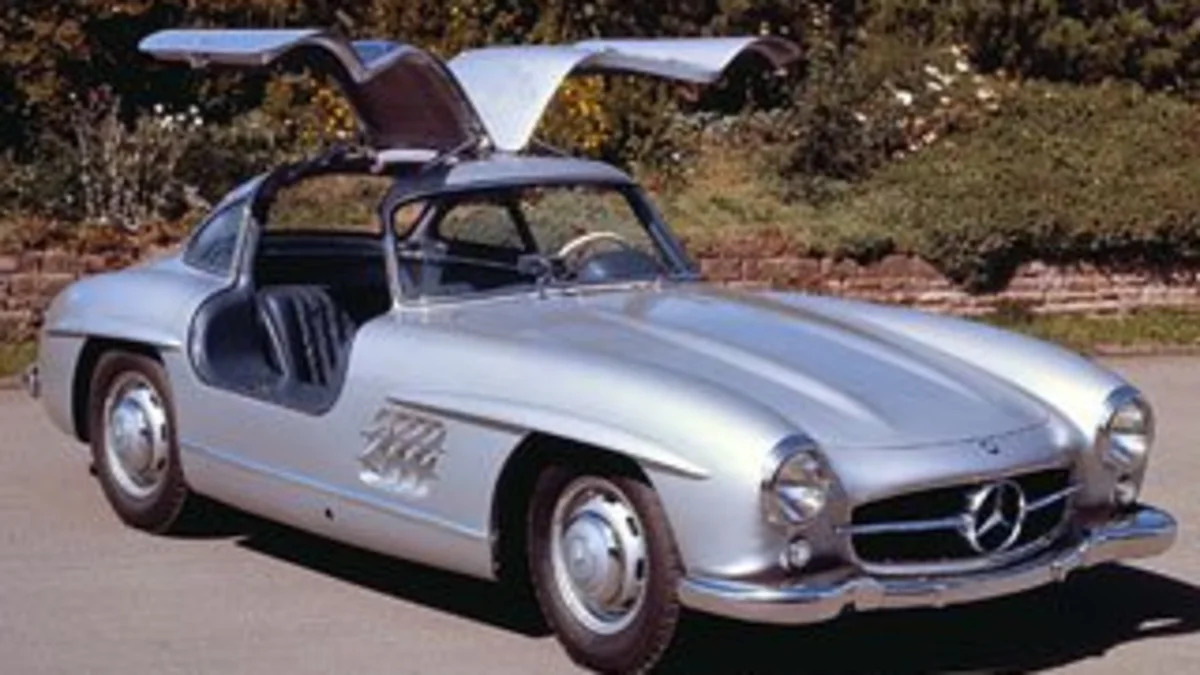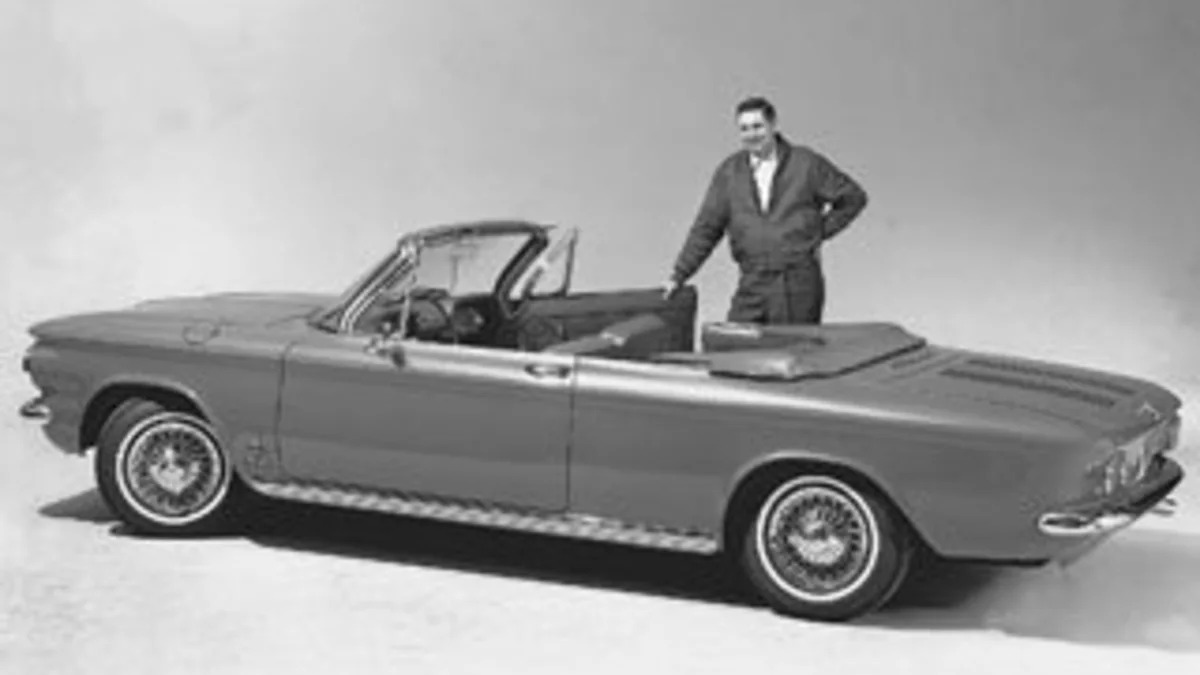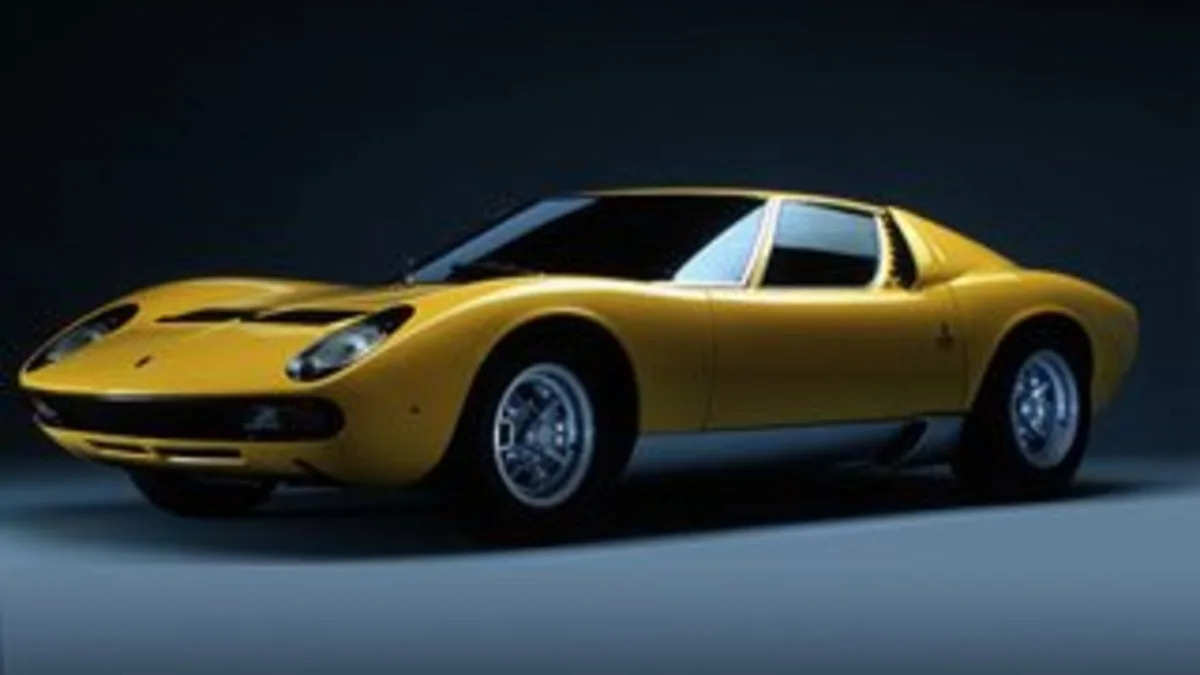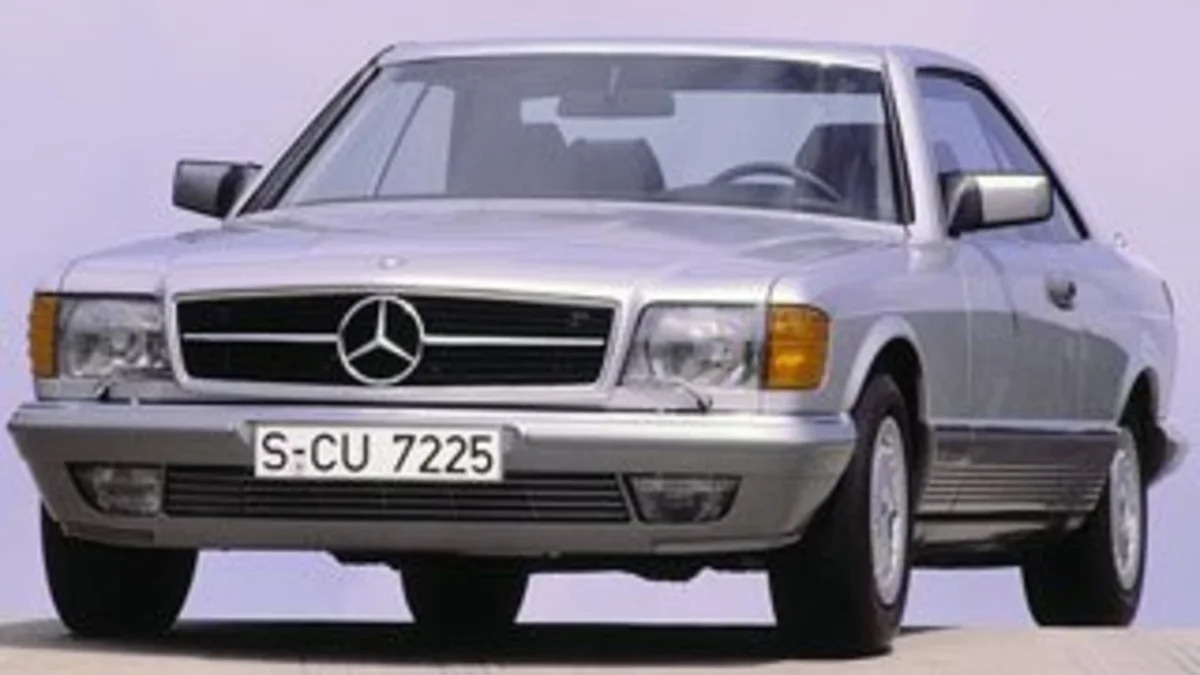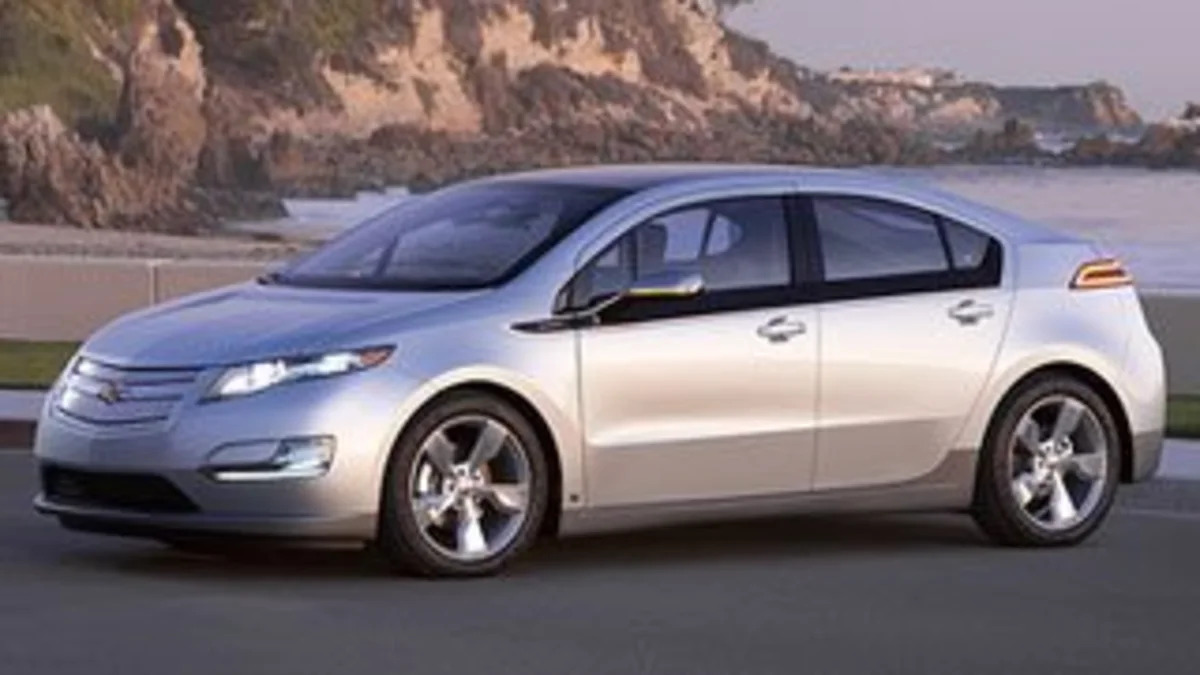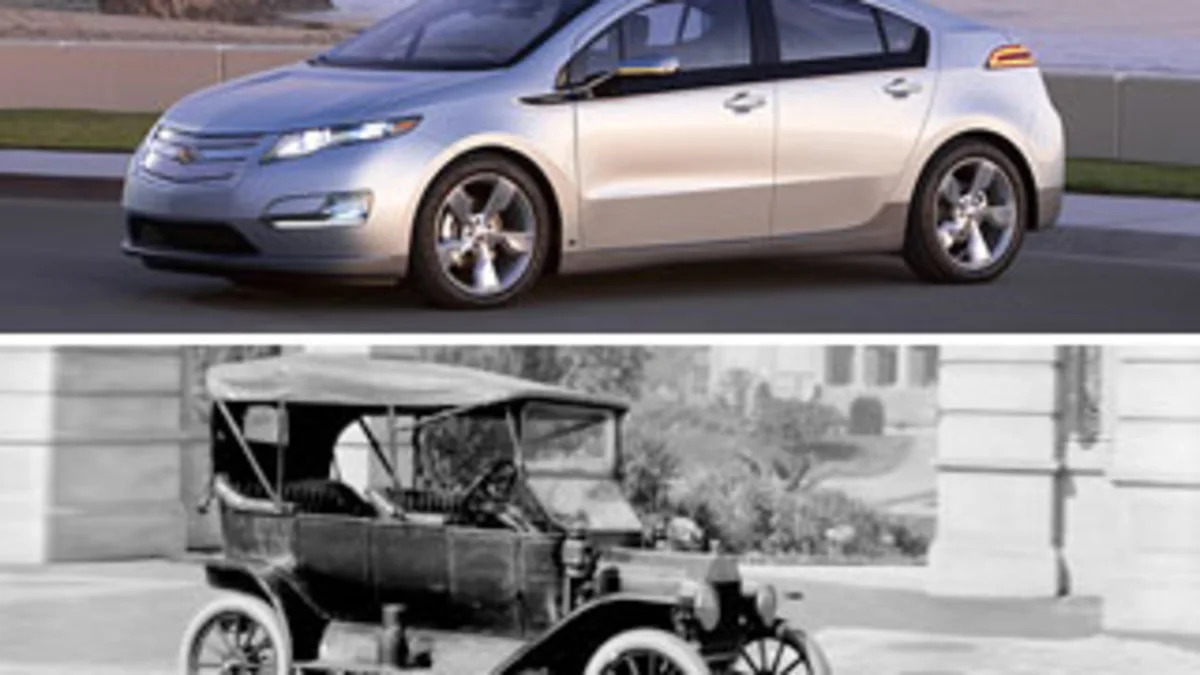The 25 Smartest Cars Of All Time
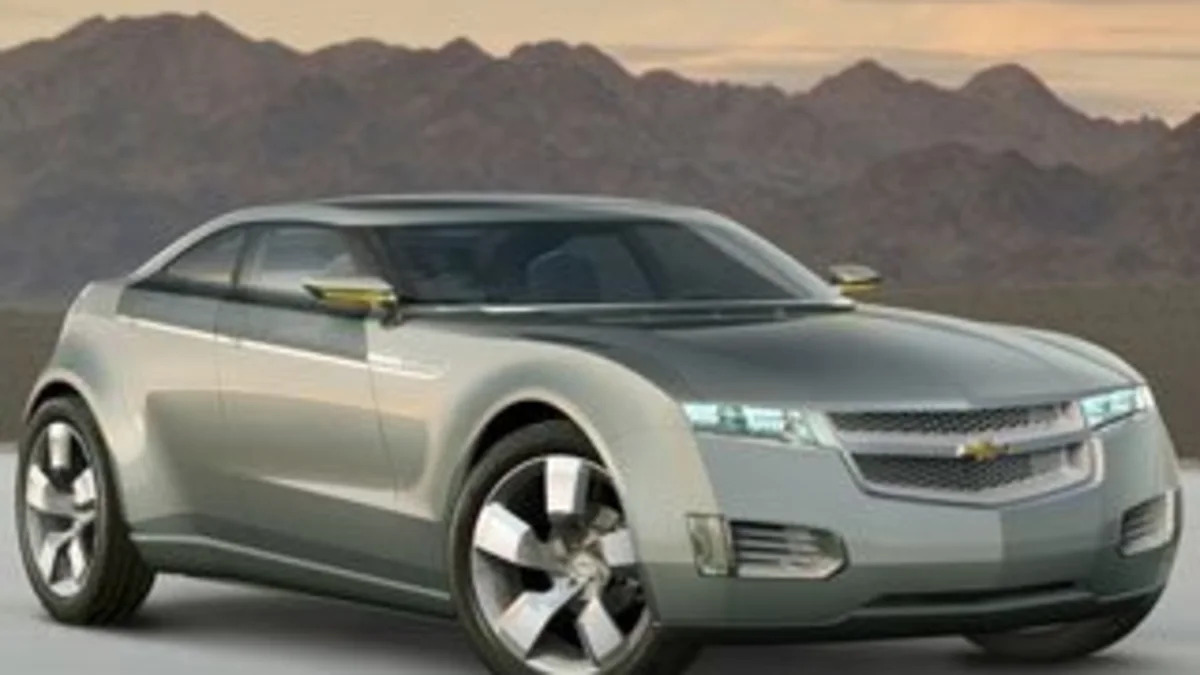
-

- Image Credit: GM
When you’ve been around cars as long as we have here at Autoblog, every new car we drive today seems frankly amazing. Commodity sedans of today can outperform the supercars of our childhood and the technological marvels of past eras have become standard equipment on even the least expensive cars on the road today.
When we started thinking of creating a list of the most technologically advanced cars of all time, we knew there would be many considerations. We decided to narrow it down to those models that we feel have had the greatest impact on the current state-of-the-art, cars that deployed technologies that are now found in most every new vehicle. Here are our picks for the smartest cars to ever hit the road, listed in chronological order. -
- Image Credit: Ford
1908 Ford Model T
Tech innovation: Mass production
Everyone knows the Model T story – at least the part about it being available in any color, so long as you wanted black. But the truth is that when Henry Ford invented the modern production line and developed the whole concept of a vertically integrated car company, he laid the blueprint for the modern automobile industry that we have today. -
- Image Credit: VW
1938 Volkswagen Beetle
Tech innovation: Global model
The Beetle might deserve to be on this list just because it’s the best-selling car ever, with over 21.5 million built over its 65-year lifespan. But the Beetle was significant because it was one of the first cars to be sold globally in great numbers. Though developed specifically for the German market of the late 1930’s, the car was successfully exported throughout the developed world. Adapted to other markets and continuously improved over the years, the Beetle was built in over a dozen different countries. Developing a single global model has long been the auto industry’s holy grail for cutting development and manufacturing costs and VW did it first. -
- Image Credit: Chrysler
1945 Jeep CJ-2A
Tech innovation: Four-wheel-drive
While the Jeep was developed to help the United States win World War II, its unique system of powering all four wheels proved to have many practical applications for the civilian market. Jeeps were popular work vehicles, especially in rural areas. Today there’s not a work truck for sale that doesn’t offer four-wheel-drive. And Jeep pioneered the idea of a “go-anywhere” vehicle that could be used for recreation, creating the blueprint for the SUV.
For more info on Four-Wheel and All-Wheel Drive, check out Techsplanation: All-Wheel Drive -
- Image Credit: Chrysler
1934 Chrysler Airflow
Tech innovation: Aerodynamics
Take a look at an Airflow compared to any other car being built in the early 1930s, and it should be pretty obvious how ahead of its time it was. The Airflow was the first car developed in a wind tunnel, and it featured a sleek and low-to-the-ground design, with flush headlights and a rounded grille. Inside the car, passengers sat between the wheels, rather than on top of the rear axle, which resulted in a better-balanced car with improved handling. Today there’s not a car in the world that doesn’t go through wind tunnel testing, as aerodynamics play an increasingly critical role in improving fuel efficiency. -
- Image Credit: Wikipedia
1948 Tucker
Tech innovation: Seatbelts
It’s hard to believe that prior to 1968, seatbelts were not required in new cars. Yet they were included among the many safety features of the short-lived Tucker sedan some 20 years earlier. The Tucker also featured a padded dashboard and shatterproof glass, and a third headlight that followed the road when you turned the steering wheel. Of course widespread seatbelt use is credited for dramatically lowering our highway fatality rates today, paving the way for further passive crash mitigation technologies, like airbags. -
- Image Credit: Wikipedia
1948 Citroen 2CV
Tech innovation: Low-cost car
The 2CV was launched in the immediate aftermath of World War II, designed specifically to help rural French farmers enter the industrialized 20th century. It was simple and cheap to build and operate, and its design was minimalistic yet functional. Today we’ve seen a revival of the idea in modern form, in simple, inexpensive cars like the Renault Logan and Tata Nano, models designed specifically for emerging markets. -
- Image Credit: Mercedes-Benz
1954 Mercedes-Benz 300SL
Tech innovation: Direct fuel injection
Not only was the Mercedes-Benz 300SL “Gullwing” the first production car to use fuel injection, but it featured direct injection 50 years before the technology became common. Its 3.0-liter, inline-six engine developed an incredible 212 horsepower, thanks to this futuristic technology. (By comparison, the 3.9-liter six in the contemporary Chevy Corvette made just 155 horses.) Today direct injection is being used to improve fuel economy in vehicles of all sorts, by allowing smaller but more powerful engines to be substituted for traditionally larger ones.
For more info on Direct Injection, check out Techsplanation: Direct Injection -
- Image Credit: Wikipedia
1956 Citroen DS
Tech innovation: Hydraulics
How revolutionary was the Citroen DS? Well, it was the first car to have power disc brakes, but that was just the tip of the iceberg. The DS employed advanced hydraulics, not just for braking, but also in its steering and suspension systems and semi-automatic transmission. At a time when most cars didn’t have power steering, let alone independent suspension, the DS offered both. While Citroen’s hydropneumatic suspension system gave the car tremendous ride quality, it was viewed as quirky and never really caught on. But Citroen’s pioneering efforts in developing the system paved the way for all sorts of sophisticated adaptive suspension designs employed today. -
- Image Credit: Ford
1957 Ford Fairlane 500 Skyliner
Tech innovation: Retractable hardtop
Remember when convertibles were "ragtops?" This past decade has seen the industry wholly embrace retractable hardtop convertibles, with models like the BMW 3 Series, Chrysler 200 and Volkswagen Eos all adopting mechanically complex folding roof structures like the one pioneered by the ’57 Ford Fairlane. Ford only built its retractable hardtop Skyliner for three model years, and it would be five decades before the world saw another hardtop convertible with a backseat. -
- Image Credit: Mini
1959 Mini
Tech innovation: Front-wheel drive
The Mini was hardly the first car to employ front-wheel drive, but it was the first to popularize the layout of most cars on the road today. Front-drive was used in various vehicles from just after the turn of the 20th Century through the 1930’s before really catching on in Europe after World War II. But it was Mini designer Alec Issigonis’ idea to turn the small, four-cylinder engine 90-degrees and mount it transversely under the hood. This stroke of genius allowed the elimination of the transmission and driveshaft tunnel, and for the first time a truly compact car could have ample room to seat four adults. -
- Image Credit: GM
1962 Chevrolet Corvair Monza Spyder
Tech innovation: Turbocharged engine
Despite its “Unsafe at Any Speed” reputation, the Chevy Corvair was a rather remarkable car -- and one of the most adventurous designs from the era in which General Motors was the world’s dominant automaker. GM introduced not one, but two cars in 1962 with turbocharged engines, the Monza Spyder and the Oldsmobile F-85 Jetfire. These were the first production cars to use turbocharged engines, and while the turbocharged V8 in the Olds was troublesome and only lasted two model years, the Corvair was available with a turbocharged flat-six through 1966. Today, turbocharged engines are back in a big way, as automakers seek out ways to improve engine efficiency – and fuel economy – without giving up power.
For more info on Turbocharging, check out Techsplanation: Turbo Charging For The Family Car -
- Image Credit: Lamborghini
1966 Lamborghini Miura
Tech innovation: Mid-engine configuration
The Lamborghini Miura was the first road-going supercar to adopt the mid-engine configuration, with its 4-liter V-12 mounted transversely behind the driver and ahead of the rear axle. The mid-engine layout provides optimal balance by concentrating the heaviest parts of the car in the middle, which makes for outstanding cornering, which is why this configuration is typically used in race cars. Most serious sports cars of recent years have used this design, from the Lotus Elise to the Audi R8 to the Ferrari Enzo to the Porsche Carrera GT. -
- Image Credit: Wikipedia
1971 Chrysler Imperial
Tech innovation: Anti-lock Brakes
While the 1966 Jensen FF was the first car with an anti-lock braking system, albeit a mechanical one, the luxury grand tourer was hardly a mass-market product, with just several hundred built over its five-year production run. Chrysler’s flagship Imperial, however, was a true production car, offered in 1971 with an optional, electronic four-wheel ABS system called “Sure Brake.” Today anti-lock braking systems not only allow vehicles to stop faster without skidding, but also form the foundation for other safety technologies, like electronic stability control, adaptive cruise control and collision mitigation systems. -
- Image Credit: Volvo
1974 Volvo 240
Tech innovation: Safety crumple zones
Arguably the safety benchmark for all cars that have followed, the 1974 Volvo 240 sedan was engineered to be safer by controlling the crash energy experienced in a collision. It stayed in production for two decades, a testament to its advanced design, which is why government safety regulators used the 240 as the basis for developing early standards. Today, modern cars are marvels of engineering, with nearly every piece of steel, aluminum and plastic used in the body structure designed to manage some of the impact energy. -
- Image Credit: Honda
1975 Honda Civic CVCC
Tech innovation: Low-emissions vehicle
Air pollution was such a serious threat to public health in the early 1970’s that the U.S. Clean Air Act was passed, calling for dramatic reductions in carbon monoxide, hydrocarbon and nitrogen oxide emissions. Carmakers were forced to scramble to try and meet the impending regulations of 1975. Hopes were pinned on the then-new catalytic converter, but cars equipped with them not only suffered from degraded performance, but could only run on unleaded gas. Honda’s Civic CVCC, however, was able to meet emissions targets without a catalytic converter, thanks to a unique cylinder head design that helped the engine burn the gasoline more efficiently. Today, Partial Zero Emissions Vehicles (PZEV) carry the torch for low emissions, offering the lowest level of emissions among conventional gasoline engine vehicles. -
- Image Credit: Audi
1980 Audi Quattro
Tech innovation: All-wheel-drive
When Audi introduced the Quattro coupe in Europe in 1980, it was a radical idea: Use the extra traction of a four-wheel-drive utility vehicle to improve the road holding of a sports car. The modern rally car was born, and the Quattro had a successful racing career in the 1980’s. The Quattro came to the U.S. in 1983, but permanent four-wheel-drive was initially slow to catch on. Over the past decade, however, it has become a popular option in passenger cars, especially in sports sedans marketed to those who live in the Snow Belt.
For more info on Four-Wheel and All-Wheel Drive, check out Techsplanation: All-Wheel Drive -
- Image Credit: Mercedes-Benz
1981 Mercedes-Benz S Class
Tech innovation: Airbags
Airbags made their production debut in 1974 on some large GM sedans, but modern airbag systems wouldn’t be seen until 1981 when they appeared as an option on the second-generation Mercedes-Benz S Class. Mercedes would offer a passenger airbag five years later, and airbags became mandatory in cars for the 1998 model year. Today, most vehicles have airbags in several locations, including side-impact airbags and curtain airbags. -
- Image Credit: Chrysler
1984 Dodge Caravan
Tech innovation: Unibody people-movers
The Dodge Caravan – and its twin, the Plymouth Voyager – launched an entire vehicle segment: The minivan. Prior to 1984, vans were just trucks, big vehicles with separate bodies and frames, which made them heavy and contributed to ponderous handling. But these new minivans were built like cars – and they drove like them too. Market dominance was immediate, but after 15 years of minivan popularity, buyers began to switch to Sport Utility Vehicles, seeking to avoid the dreaded “soccer mom” stigma. Today, however, many drivers have grown fed up with the poor fuel economy of their SUV’s and are trading them in on “crossovers” – which are not much more than minivans without the sliding doors. -
- Image Credit: GM
1986 Buick Riviera
Tech innovation: Touchscreen instrument panel
Domestic cars of the 1980’s are almost universally derided for poor quality and conservative design. But despite the challenges faced by the Big Three during that dark decade, there were some interesting attempts at advancing the state of the art. One of the most overlooked milestones was the unique touchscreen instrument panel of the 1986 Buick Riviera, the first touchscreen ever offered in a production car. Displaying a digital trip computer, radio and climate controls, and digital “gages,” the 9-inch CRT Graphic Control Center pointed the way to our current obsession with high-tech infotainment features. Today even inexpensive compact cars boast large LCD touchscreens. -
- Image Credit: Honda
1990 Acura NSX
Tech innovation: All-aluminum body structure
Aluminum has been a popular material for constructing cars since the dawn of the auto industry. It’s lightweight and strong, but it’s more expensive than steel and is harder to work with. So most automotive applications for aluminum have been confined to specific parts – engine blocks and wheels, hoods and fenders, suspension components and trim pieces. But with its NSX supercar, Honda went one step further and built the whole unibody structure out of aluminum, developing some new manufacturing techniques in the process. It shaved over 400 pounds from the car’s curb weight, and paved the ground for a whole host of subsequent vehicles to be built from aluminum in a similar fashion, like the 1997 Audi A8 and 1999 Ferrari 360 Modena. Today aluminum continues to be used to shave precious pounds that contribute to improved fuel economy. -
- Image Credit: Honda
1990 Honda Legend
Tech innovation: Navigation system
When Honda introduced its second-generation Legend in 1990 with an optional digital navigation system, the Global Positioning System didn’t even exist. Honda’s system relied upon a gas gyroscope and was only available on Japanese domestic market cars. Today you can buy a portable GPS navigation system for less than $100, but you probably don’t need to since there’s likely a mapping application built right into your phone. Even so, automotive navigation systems are still wildly popular, and may soon be integrated with other technologies to help enable cars to drive autonomously. -
- Image Credit: GM
1996 GM EV-1
Tech innovation: Electric car
It wasn’t the first electric car – the technology was popular in the 19th Century – but GM’s EV-1 was the car that single-handedly created the current market for electrified vehicles. Originally conceived as nothing but a concept car, in 1990 an overzealous Roger Smith, GM chairman and CEO, promised that his company would build an electric car. This commitment spurred the California Air Resources Board to require the biggest carmakers to begin selling electric cars by 1998. While the EV-1 failed and CARB eventually caved to pressure from the automakers, suspending its mandate, GM’s decade-long experiment in electrification has had profound effects on the products of today. The EV-1 scared the Japanese into developing hybrids, including the Toyota Prius and Honda Insight, while GM’s design of the Chevy Volt had its genesis in the EV-1. -
- Image Credit: Toyota
1997 Toyota Prius
Tech innovation: Hybrid
With the introduction of the Prius v and Prius c and Toyota’s continuing dominance of the hybrid market -- it sold some 136,000 Priuses last year, more than the Chevrolet Camaro and Corvette combined -- it’s hard to remember how mediocre the original Prius was. Looking like an even dowdier Corolla, that first-generation Prius was weird, slow, small and had precious little cargo capacity thanks to the huge battery pack in its trunk. But it got 41 miles per gallon and its technology was interesting, even if most consumers didn’t understand it. Most importantly it led to the development of the second-generation Prius, which became such a hit that other manufacturers were forced to develop their own hybrids.
For more info on Hybrids, check out Techsplanation: Gas-Electric Hybrid -
- Image Credit: Honda
2008 Honda FCX Clarity
Tech innovation: Fuel cell car
If there is a “flying car” of our generation, it is the hydrogen-fueled fuel cell vehicle. We can remember driving our first prototypes two decades ago, yet replacing an internal combustion engine with a fuel cell and refueling with hydrogen instead of gasoline seems like a technology that’s forever 10 years away. But Honda deserves some credit for actually producing a real, consumer-ready fuel cell car in the FCX Clarity. We’ve driven it on public roads without engineers riding in the back seat, and it behaves exactly like any other car. Honda has even leased the cars to average Joes and Janes in Southern California. -
- Image Credit: GM
2011 Chevrolet Volt
Tech innovation: Plug-in hybrid
We may be forever waiting for hydrogen fuel cells to be ready for mainstream production. Ditto battery technology or charging infrastructure advancing rapidly enough to make pure electric vehicles viable as anything other than second cars. Until then, however, there’s the Chevy Volt. Designed to travel 30-35 miles on electric power before its gasoline engine kicks in to allow for longer trips, this plug-in hybrid is the most wrongly maligned car in history. The Volt is a truly revolutionary vehicle that could allow the vast majority of Americans to wean themselves off gasoline for their weekday commuting, but still allow trips to grandma’s house on the weekends.
The Volt is not only the most recent of the cars we chose, but we feel that it ties with the Ford Model T for number-one on our list as the most innovative breakthrough car of all time. If the Model T can be called the first "real car" of the twentieth century for being the first to be reliably mass produced, then the Volt, we think, is the first "real car" of the 21st century because it the first true game-changer we have seen since 2000 delivered to consumer driveways.
For more info on Hybrids, check out Techsplanation: Gas-Electric Hybrid -
After discussing the list amongst ourselves, we agreed on a tie for the "Smartest Cars of All Time" based on their technological innovation for their time, and impact on history.
After much debate, we arrived at what we dub "the first real car of the twentieth century," the Ford Model T, and "the first real car of the 21st century," the Chevy Volt.
The Model T blazed the trail for mass production for the whole industry, and the Chevy Volt, though embroiled in political controversy, is the first car to establish a complete bridge from the internal combustion engine to electric battery propulsion for vehicles.
The jury is still out on whether the U.S., European or Chinese consumer will ultimately embrace the extended range plug-in electric vehicle as the car of this century. It is especially hard to sort that out given the car's status as a political punching bag in an election year.
But it delivers on what it was intended to be--a game changer for automotive transportation in a new century.






